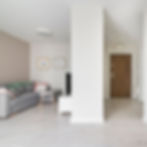Prepping Your Home for Holiday Guests with Mobility Limitations
- Rehab Medical
- Nov 16, 2023
- 4 min read

The holidays are just around the corner and we can practically smell the turkey roasting already. As you start preparing your home for holiday guests, you’re probably thinking; will there be enough beds for overnight guests, will there be enough seating, where will everyone park, what types of entertainment activities should you do? But what happens if someone invites their significant other who happens to require mobility assistance, or if grandparents are coming for the first time and require mobility assistance.
You’ll want to make sure to accommodate their needs, so they too have an enjoyable holiday. These six home modifications are easy to implement and are sure to accommodate all your guests’ needs.

1) Clear Any Debris from the Yard
The first part of your home guests see is the yard or driveway so it’s important to have a clean and smooth pathway for wheelchairs, walkers, or even scooters to get in and out of. Although mobility solutions can be used outdoors, its parts are not built to withstand heavy wear and tear from outside elements for a prolonged period of time. Providing a smooth and clear pathway will make it easy for your guests to enter your home and will also prolong the life of their mobility equipment.
2) Add Temporary Ramps to Entryways

If the entryway to your home is lined with stairs, that can make it very difficult for mobility users to enter your home. Installing a ramp or replacing your stairs with a ramp would make it much easier for mobility limited guests to enter and exit your home. Don’t have the funds or time to install a permanent ramp? No worries, there are quick and inexpensive options to choose from.
If you don’t have stairs but have raised landings, doorways, or curbs, threshold ramps are the ideal way to go. They provide a simple and safe way for wheelchair users to cross over raised platforms.
These types of ramps are super convenient and can fit almost any need. They are great for helping those to get in and out of vehicles, up and down stairs, and their durability and slip resistant surface make it safe for everyday use.
These ramps provide a convenient and easy solution for frequent traveling and transport.
This ramp is made up of small interchangeable parts making it easy to customize for your guest’s unique needs.

3) Declutter Hallways and High Traffic Areas
Once guests have entered your home, you’ll want to make sure they can safely maneuver throughout your home and can access necessities. For guests that have power wheelchairs, bariatric wheelchairs, or bulky wheelchairs, they will require extra room to get in and out of spaces, so make sure any hallway or doorway they’ll need to navigate can accommodate the bulkiness of their chair.
It might be helpful to ask what the length and width of the chair is ahead of time so you can create a unique floor plan for them to easily navigate. If you have a guest with a scooter, you’ll want to be even more mindful as scooters do not have the best turning radius, meaning narrow spaces and tight turns will make it difficult for them to navigate. It’s best to check with your guests prior to your guests arriving to make sure you can accommodate.

4) Install Safety Support Devices in Bathrooms
Bathrooms can be tricky to maneuver even if you are an abled bodied person. According to the Centers for Disease Control and Prevention (CDC) more than 230,000 people sustain injuries in the bathroom that result in hospitalization. Given the high number of injury cases, adding handrails, safety bars, shower stools, slip mats, or other safety items to your bathroom will provide your guests with the additional support they may need to use the bathroom without the risk of falling or sustaining injuries.
For inexpensive bathroom safety check Amazon, Walmart, Home Depot, or your local shopping center.
5) Remove Area Rugs
While rugs and floor mats can add that extra comfort when walking around your home barefoot, it can be a tripping hazard for those requiring mobility assistance. It’s best to remove your rugs to allow for better traction and stability. However, if you have a big area rug or limited storage space to put your rug, make sure to secure corners and edges to the floor with grippers, rug tape, or anti-slip mats.

6) Make Your Kitchen/Dining Room Accessible
Kitchens and dining rooms will more than likely be the most used part of your home so making sure it’s accommodating for those with mobility limitations is crucial. Most homes weren’t built with ADA guidelines in mind, so accessing countertops, cabinets, microwaves, refrigerators, and other appliances can prove to be difficult. It’s best to set aside eating utensils and other essentials so mobility users can easily access, additionally, you’ll want to evaluate seating options.

If your kitchen or dining table isn’t equipped to accommodate someone in a wheelchair, look into purchasing an inexpensive adjustable table or individual tray tables. The more fluid your seating options are, the easier it will be for your guests to maneuver in and out on their own when needed.
Most importantly, always check with your guests before making any adjustments to ensure you are accommodating their unique needs. For guests who use power operated devices, make sure outlets are easily accessible so they can charge their batteries and if they require bedside transfer assistance, be sure to provide them with a safety bar, harness, or stool so they can transfer from their chair to the bed and vice versa swiftly.